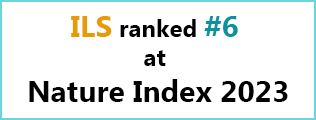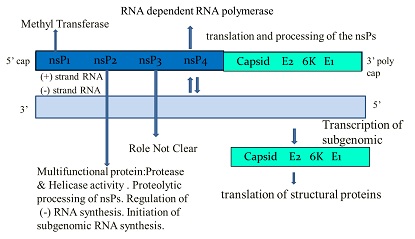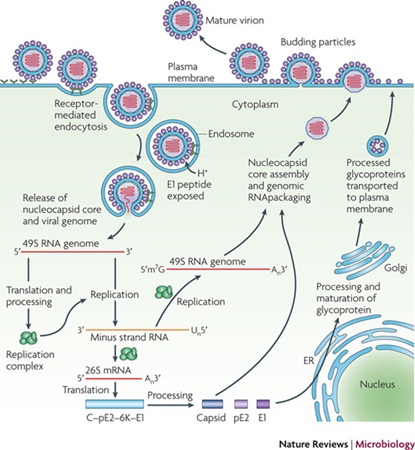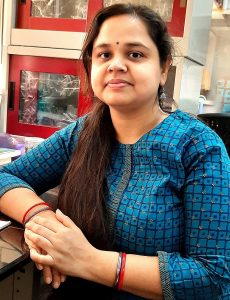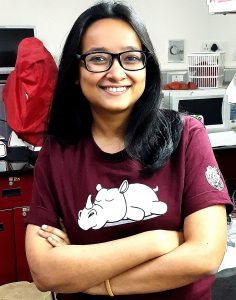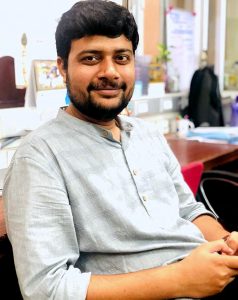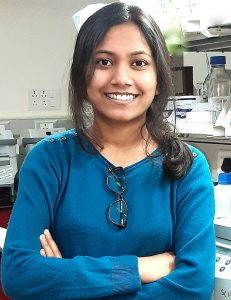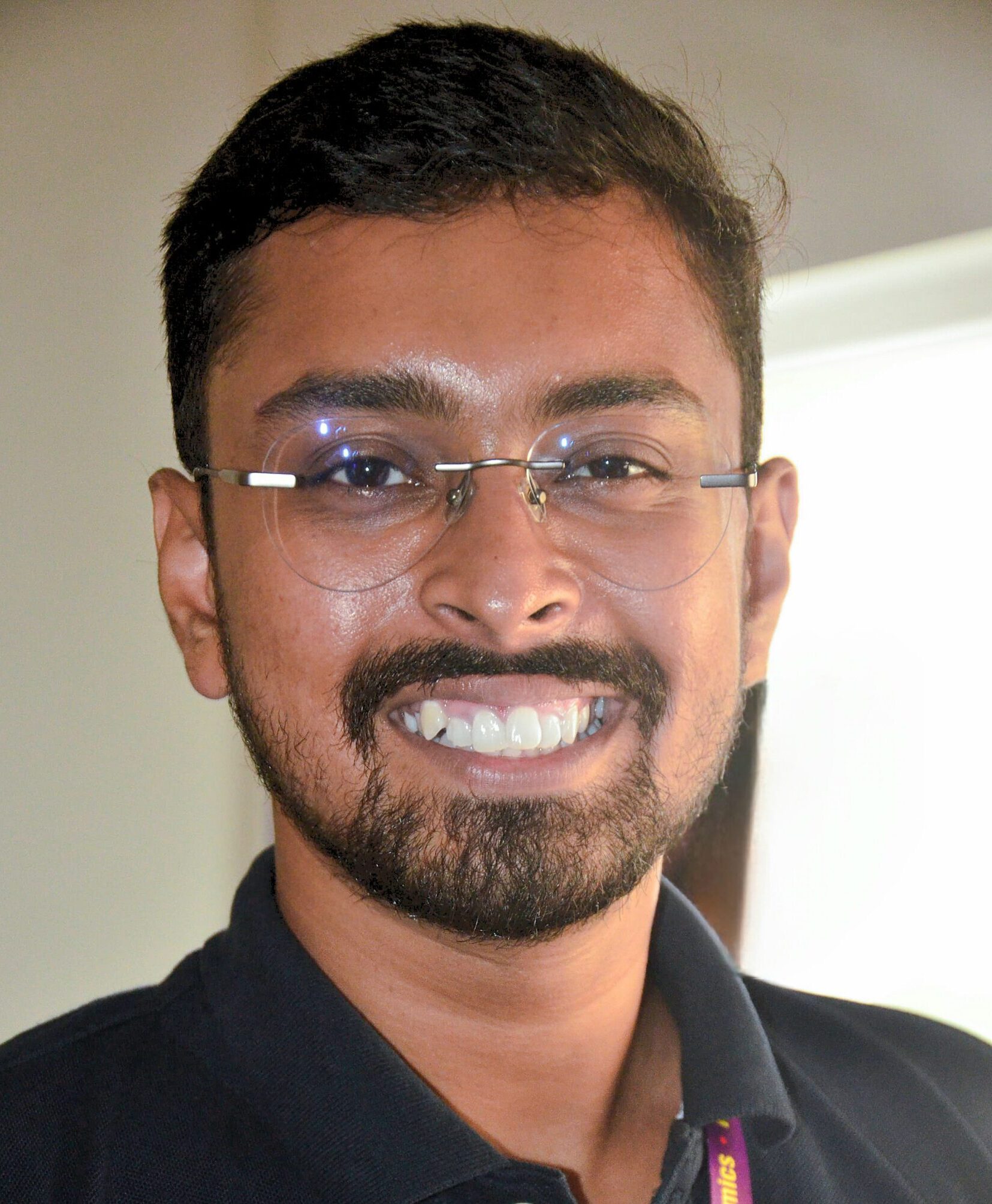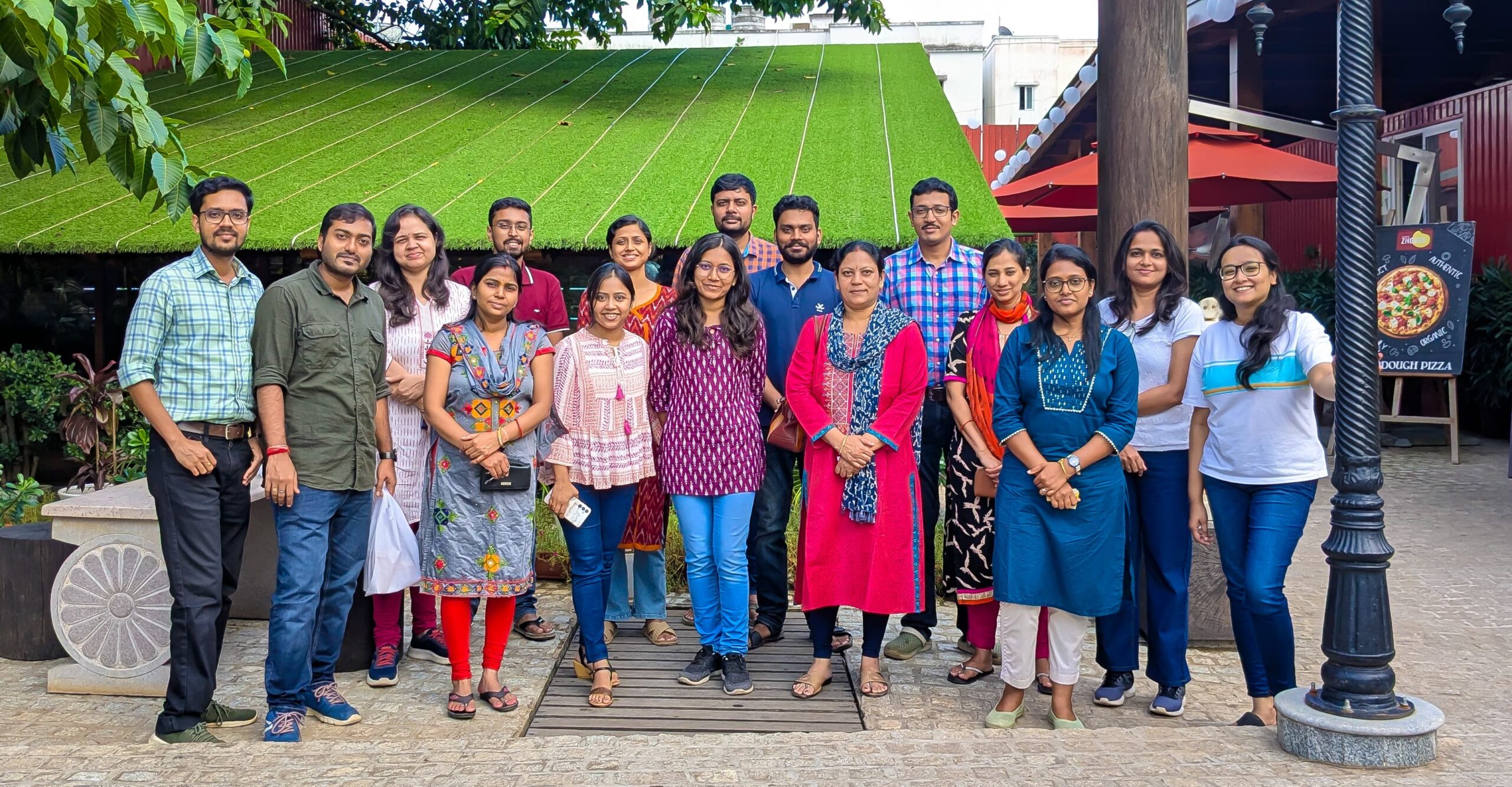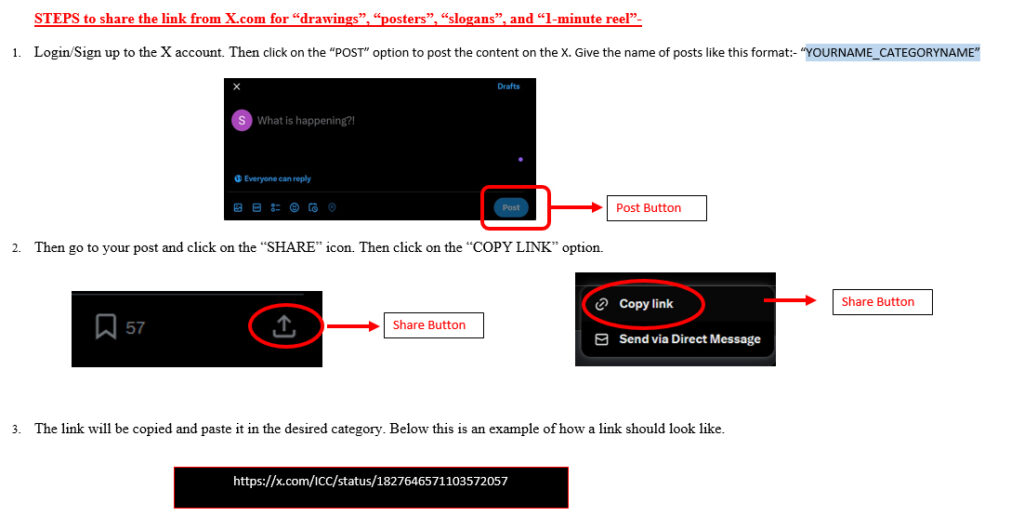Publications:
2024
- Dash, R. N., Prabhudutta, M., De, S., Swain, R. P., Moharana, A. K., Subudhi, B. B., & Chattopadhyay, S. (2024). Conjugates of ibuprofen inhibit CHIKV infection and inflammation. Molecular diversity
- Mamidi, P., Panda, S., Ray, A., Mohanty, M., Mandal, M. C., Santra, D., Moharana, B., Nayak, B., Chattopadhyay, S., & Mishra, B. (2024). Molecular characterization of coxsackievirus A24 variants isolated from an outbreak of acute hemorrhagic conjunctivitis. Indian journal of medical microbiology
2023
- Dash, R. N., Ray, A., Mamidi, P., De, S., Mohapatra, T. K., Moharana, A. K., Mukherjee, T., Ghosh, S., Chattopadhyay, S., Subudhi, B. B., & Chattopadhyay, S. (2023). Salicylic Acid Conjugate of Telmisartan Inhibits Chikungunya Virus Infection and Inflammation. ACS omega
- Chatterjee, S., Subudhi, B. B., & Chattopadhyay, S. (2023). A hidden gem Catenin-α-1 is essential for Chikungunya virus infection. Microbiology spectrum
- Chatterjee, S., Ghosh, S., Datey, A., Mahish, C., Chattopadhyay, S., & Chattopadhyay, S. (2023). Chikungunya virus perturbs the Wnt/β-catenin signaling pathway for efficient viral infection. Journal of virology
- Babu, N., Mahilkar, S., Jayaram, A., Ibemgbo, S. A., Mathur, G., Shetty, U., Sudandiradas, R., Kumar, P. S., Singh, S., Pani, S. S., Mudgal, P. P., Shastri, J. S., Agarwal, S., Ratho, P. K., Mishra, B., Chattopadhyay, S., Jagadesh, A., & Sunil, S. (2023). Cytokine profile, neutralisation potential and viral replication dynamics in sera of chikungunya patients in India: a cross-sectional study. The Lancet regional health – Southeast Asia
- Halder, S., Thakur, A., Keshry, S. S., Jana, P., Karothia, D., Das Jana, I., Acevedo, O., Swain, R. K., Mondal, A., Chattopadhyay, S., Jayaprakash, V., & Dev, A. (2023). SELEX based aptamers with diagnostic and entry inhibitor therapeutic potential for SARS-CoV-2. Scientific reports
- Sengupta, S., Shaw, S. K., Chatterjee, S., Bhattacharya, G., Barik, P. K., Chattopadhyay, S., & Devadas, S. (2023). Perturbations in spike-specific peripheral T follicular helper cells in SARS-CoV2 breakthrough convalescent individuals immunized by BBV152 vaccine. Journal of medical virology
- Mahish, C., De, S., Chatterjee, S., Ghosh, S., Keshry, S. S., Mukherjee, T., Khamaru, S., Tung, K. S., Subudhi, B. B., Chattopadhyay, S., & Chattopadhyay, S. (2023). TLR4 is one of the receptors for Chikungunya virus envelope protein E2 and regulates virus induced pro-inflammatory responses in host macrophages. Frontiers in immunology
- Kode, J., Maharana, J., Dar, A. A., Mukherjee, S., Gadewal, N., Sigalapalli, D. K., Kumar, S., Panda, D., Ghosh, S., Keshry, S. S., Mamidi, P., Chattopadhyay, S., Pradhan, T., Kailaje, V., Inamdar, S., & Gujjarwar, V. (2023). 6-Shogaol Exhibits Anti-viral and Anti-inflammatory Activity in COVID-19-Associated Inflammation by Regulating NLRP3 Inflammasomes. ACS omega
2022
- Chatterjee, S., Kumar, S., Mamidi, P., Datey, A., Sengupta, S., Mahish, C., Laha, E., De, S., Keshry, S. S., Nayak, T. K., Ghosh, S., Singh, S., Subudhi, B. B., Chattopadhyay, S., & Chattopadhyay, S. (2022). DNA Damage Response Signaling Is Crucial for Effective Chikungunya Virus Replication. Journal of virology
- Chatterjee, S., Keshry, S. S., Ghosh, S., Ray, A., & Chattopadhyay, S #. (2022). Versatile β-Catenin Is Crucial for SARS-CoV-2 Infection. Microbiology spectrum
- De S, Ghosh S, Keshry SS, Mahish C, Mohapatra C, Guru A, Mamidi P, Datey A, Pani SS, Vasudevan D, Beuria TK, Chattopadhyay S, Subudhi BB #, Chattopadhyay S #. MBZM-N-IBT, a Novel Small Molecule, Restricts Chikungunya Virus Infection by Targeting nsP2 Protease Activity In Vitro, In Vivo, and Ex Vivo. Antimicrobial Agents and Chemotherapy. 2022
- Singh B, Avula K, Chatterjee S, Datey A, Ghosh A, De S, Keshry SS, Ghosh S, Suryawanshi AR, Dash R, Senapati S, Beuria TK, Prasad P, Raghav S, Swain R, Parida A, Hussain Syed G #, Chattopadhyay S #. Isolation and Characterization of Five Severe Acute Respiratory Syndrome Coronavirus 2 Strains of Different Clades and Lineages Circulating in Eastern India. Frontiers in Microbiology. 2022
- Simo Nemg FB, De S, Keshry SS, Mamidi P, Njayou FN, Demanou M, Moundipa Fewou P #, Chattopadhyay S #. Plants extracts from Cameroon pharmacopeia strongly inhibit the Chikungunya virus infection by targeting entry and replication steps. Journal of Ethnopharmacology. 2022
- Prasad P #, Mahapatra S, Mishra R, Murmu KC, Aggarwal S, Sethi M, Mohapatra P, Ghosh A, Yadav R, Dodia H, Ansari SA, De S, Singh D, Suryawanshi A, Dash R, Senapati S, Beuria TK, Chattopadhyay S, Syed GH, Swain R, Raghav SK, Parida A #. Long-read 16S-seq reveals nasopharynx microbial dysbiosis and enrichment of Mycobacterium and Mycoplasma in COVID-19 patients: a potential source of co-infection. Molecular Omics. 2022
- Sengupta S, Bhattacharya G, Chatterjee S, Datey A, Shaw SK, Suranjika S, Nath P, Barik PK, Prasad P, Chattopadhyay S, Swain RK, Parida A #, Devadas S #. Underlying Co-Morbidity Reveals Unique Immune Signatures in Type II Diabetes Patients Infected With SARS-CoV2. Frontiers in Immunology. 2022
- Panda S K, Mishra S, Mamidi P, Chattopadhyay S, Singh A K #. An efficient PET-based probe for detection and discrimination of Zn2+ and Cd2+ in near-aqueous media and live-cell imaging. Journal of Photochemistry and Photobiology A: Chemistry. 2022
- De S, Mamidi P, Ghosh S, Keshry SS, Mahish C, Pani SS, Laha E, Ray A, Datey A, Chatterjee S, Singh S, Mukherjee T, Khamaru S, Chattopadhyay S #, Subudhi BB #, Chattopadhyay S #. Telmisartan Restricts Chikungunya Virus Infection In Vitro and In Vivo through the AT1/PPAR-γ/MAPKs Pathways. Antimicrobial Agents and Chemotherapy. 2022
2021
- Chatterjee S, Datey A, Sengupta S, Ghosh A, Jha A, Walia S, Singh S, Suranjika S, Bhattacharya G, Laha E, Keshry SS, Ray A, Pani SS, Suryawanshi AR, Dash R, Senapati S, Beuria TK, Syed GH, Prasad P, Raghav SK, Devadas S, Swain RK, Chattopadhyay S, Parida A. Clinical, Virological, Immunological, and Genomic Characterization of Asymptomatic and Symptomatic Cases With SARS-CoV-2 Infection in India. Frontiers in Cellular and Infection Microbiology. 2021
- Mamidi P, Nayak TK, Kumar A, Kumar S, Chatterjee S, De S, Datey A, Ghosh S, Keshry SS, Singh S, Laha E, Ray A, Chattopadhyay S, Chattopadhyay S. MK2a inhibitor CMPD1 abrogates chikungunya virus infection by modulating actin remodeling pathway. PLoS Pathogens. 2021
- Nath P, Chauhan NR, Jena KK, Datey A, Kumar ND, Mehto S, De S, Nayak TK, Priyadarsini S, Rout K, Bal R, Murmu KC, Kalia M, Patnaik S, Prasad P, Reggiori F, Chattopadhyay S, Chauhan S. Inhibition of IRGM establishes a robust antiviral immune state to restrict pathogenic viruses. EMBO Reports. 2021
- Kumar A, De S, Moharana AK, Nayak TK, Saswat T, Datey A, Mamidi P, Mishra P, Subudhi BB, Chattopadhyay S. Inhibition of herpes simplex virus-1 infection by MBZM-N-IBT: in silico and in vitro studies. Virology Journal. 2021
2020
- Hossain S, Prakash V, Mamidi P, Chattopadhyay S, Singh A. Pyrene Appended Bipyridine Hydrazone Ligand as a Turn-ON Sensor for Cu2+ and Its Bioimaging Application. RSC Advances. 2020
- Datey A, Singh LM, Rajkhowa U, Prusty BK, Saswat T, Mamidi P, Barkalita LM, Dutta R, Sharma KC, Sahoo D, Borah P, Devi SI, Chattopadhyay S. Molecular epidemiology of Japanese encephalitis virus in pig population of Odisha, Assam and Manipur states of India. Infection, Genetics and Evolution. 2020
- Sanjai Kumar P, Nayak TK, Mahish C, Sahoo SS, Radhakrishnan A, De S, Datey A, Sahu RP, Goswami C, Chattopadhyay S, Chattopadhyay S. Inhibition of transient receptor potential vanilloid 1 (TRPV1) channel regulates chikungunya virus infection in macrophages. Archives of Virology. 2020
- Jena KK, Mehto S, Nath P, Chauhan NR, Sahu R, Dhar K, Das SK, Kolapalli SP, Murmu KC, Jain A, Krishna S, Sahoo BS, Chattopadhyay S, Rusten TE, Prasad P, Chauhan S, Chauhan S. Autoimmunity gene IRGM suppresses cGAS-STING and RIG-I-MAVS signaling to control interferon response. EMBO Reports. 2020
- Raghav S, Ghosh A, Turuk J, Kumar S, Jha A, Madhulika S, Priyadarshini M, Biswas VK, Shyamli PS, Singh B, Singh N, Singh D, Datey A, Avula K, Smita S, Sabat J, Bhattacharya D, Kshatri JS, Vasudevan D, Suryawanshi A, Dash R, Senapati S, Beuria TK, Swain R, Chattopadhyay S, Syed GH, Dixit A, Prasad P; Odisha COVID-19 Study Group; ILS COVID-19 Team, Pati S, Parida A. Analysis of Indian SARS-CoV-2 Genomes Reveals Prevalence of D614G Mutation in Spike Protein Predicting an Increase in Interaction With TMPRSS2 and Virus Infectivity. Frontiers in Microbiology. 2020
2019
- Dey D, Siddiqui SI, Mamidi P, Ghosh S, Kumar CS, Chattopadhyay S, Ghosh S, Banerjee M. The effect of amantadine on an ion channel protein from Chikungunyavirus. PLOS Neglected Tropical Diseases. 2019
- Nayak TK, Mamidi P, Sahoo SS, Kumar PS, Mahish C, Chatterjee S, Subudhi BB, Chattopadhyay S, Chattopadhyay S. P38 and JNK Mitogen-Activated Protein Kinases Interact with Chikungunya Virus Non-Structural Protein-2 and Regulate TNF Induction during Viral Infection in Macrophages. Frontiers in Immunology. 2019
- Saswat T, Sahoo N, Muduli S, Debata NK, Chattopadhyay S, Chattopadhyay S. Epidemiological trends and molecular dynamics of dengue, chikungunya virus infection, coinfection, and other undifferentiated fever during 2015-2016 in Odisha, India. Journal of Medical Virology. 2019
- Patro ARK, Mohanty S, Prusty BK, Singh DK, Gaikwad S, Saswat T, Chattopadhyay S, Das BK, Tripathy R, Ravindran B. Cytokine Signature Associated with Disease Severity in Dengue. Viruses. 2019
2018
- Kumar S, Kumar A, Mamidi P, Tiwari A, Kumar S, Mayavannan A, Mudulli S, Singh AK, Subudhi BB, Chattopadhyay S. Chikungunya virus nsP1 interacts directly with nsP2 and modulates its ATPase activity. Scientific Reports. 2018
2017
- Nayak TK, Mamidi P, Kumar A, Singh LP, Sahoo SS, Chattopadhyay S, Chattopadhyay S. Regulation of Viral Replication, Apoptosis and Pro-Inflammatory Responses by 17-AAG during Chikungunya Virus Infection in Macrophages. Viruses. 2017
2016
- Mishra P, Kumar A, Mamidi P, Kumar S, Basantray I, Saswat T, Das I, Nayak TK, Subhasis Chattopadhyay S, Subudhi BB, Chattopadhyay S. Inhibition of Chikungunya Virus Replication by 1-[(2-Methylbenzimidazol-1-yl) Methyl]-2-Oxo Indolin-3-ylidene] Amino] Thiourea (MBZM-N-IBT). Scientific Reports.2016
2015
- Kumar S, Mamidi P, Kumar A, Basantray I, Bramha U, Dixit A, Maiti PK, Singh S, Suryawanshi AR, Chattopadhyay S, Chattopadhyay S. Development of novel antibodies against non-structural proteins nsP1, nsP3 and nsP4 of Chikungunya virus: Potential use in basic research. Archives of Virology. 2015
- Saswat T, Kumar A, Kumar S, Mamidi P, Muduli S, Debata NK, Pal NS, Pratheek BM., Chattopadhyay S, Chattopadhyay S. High rates of co-infection of Dengue and Chikungunya virus in Odisha and Maharashtra, India during 2013. Infection, Genetics and Evolution. 2015
- Pratheek BM, Suryawanshi AR, Chattopadhyay S, Chattopadhyay S. In silico analysis of MHC-I restricted epitopes of Chikungunya virus proteins: Implication in understanding anti-CHIKV CD8(+) T cell response and advancement of epitope based immunotherapy for CHIKV infection. Infection, Genetics and Evolution. 2015
2014
- Chattopadhyay S, Kumar A, Mamidi P, Nayak TK, Das I, Chhatai J, Basantray I, Bramha U, Maiti PK, Singh S, Suryawanshi AR, Chattopadhyay S. Development and characterization of monoclonal antibody against non-structural protein-2 of Chikungunya virus and its application. Journal of Virological Methods. 2014
- Kumar A, Mamidi P, Das I, Nayak TK, Kumar S, Chhatai J, Chattopadhyay S, Suryawanshi AR, Chattopadhyay S. A novel 2006 Indian outbreak strain of Chikungunya virus exhibits different pattern of infection as compared to prototype strain. PLOS One. 2014
- Das I, Basantray I, Mamidi P, Nayak TK, B M P, Chattopadhyay S, Chattopadhyay S. Heat shock protein 90 positively regulates Chikungunya virus replication by stabilizing viral non-structural protein nsP2 during infection. PLOS One. 2014
2007
- Chattopadhyay S, Weller SK. Direct interaction between the N- and C-terminal portions of the herpes simplex virus type 1 origin binding protein UL9 implies the formation of a head-to-tail dimer. Journal of Virology. 2007
2006
- Chattopadhyay S, Weller SK. DNA binding activity of the herpes simplex virus type 1 origin binding protein, UL9, can be modulated by sequences in the N terminus: correlation between transdominance and DNA binding. Journal of Virology. 2006
- Varghese V, Ghosh S, Das S, Bhattacharya SK, Krishnan T, Karmakar P, Kobayashi N, Naik TN. Characterization of VP1, VP2 and VP3 gene segments of a human rotavirus closely related to porcine strains. Virus Genes. 2006
2005
- Chaudhuri S, Das S, Chowdhury A, Santra A, Bhattacharya SK, Naik TN. Molecular epidemiology of HCV infection among acute and chronic liver disease patients in Kolkata, India. Journal of Clinical Virology. 2005
2004
- Das S, Varghese V, Chaudhuri S, Barman P, Kojima K, Dutta P, Bhattacharya SK, Krishnan T, Kobayashi N, Naik TN. Genetic variability of human rotavirus strains isolated from Eastern and Northern India. Journal of Medical Virology. 2004
- Barman P, Ghosh S, Das S, Varghese V, Chaudhuri S, Sarkar S, Krishnan T, Bhattacharya SK, Chakrabarti A, Kobayashi N, Naik TN. Sequencing and sequence analysis of VP7 and NSP5 genes reveal emergence of a new genotype of bovine group B rotaviruses in India. Journal of Clinical Microbiology. 2004
- Varghese V, Das S, Singh NB, Kojima K, Bhattacharya SK, Krishnan T, Kobayashi N, Naik TN. Molecular characterization of a human rotavirus reveals porcine characteristics in most of the genes including VP6 and NSP4. Archives of Virology. 2004
2003
- Das S, Varghese V, Chaudhury S, Barman P, Mahapatra S, Kojima K, Bhattacharya SK, Krishnan T, Ratho RK, Chhotray GP, Phukan AC, Kobayashi N, Naik TN. Emergence of novel human group A rotavirus G12 strains in India. Journal of Clinical Microbiology. 2003
2002
- Das S, Sen A, Uma G, Varghese V, Chaudhuri S, Bhattacharya SK, Krishnan T, Dutta P, Dutta D, Bhattacharya MK, Mitra U, Kobayashi N, Naik TN. Genomic diversity of group A rotavirus strains infecting humans in eastern India. Journal of Clinical Microbiology. 2002
2001
- Sen A, Kobayashi N, Das S, Krishnan T, Bhattacharya SK, Naik TN. The evolution of human group B rotaviruses. The Lancet. 2001
2000
- Sen A, Kobayashi N, Das S, Krishnan T, Bhattacharya SK, Urasawa S, Naik TN. Amplification of various genes of human group B rotavirus from stool specimens by RT-PCR. Journal of Clinical Virology. 2000
1999
- Krishnan T, Sen A, Choudhury JS, Das S, Naik TN, Bhattacharya SK. Emergence of adult diarrhoea rotavirus in Calcutta, India. The Lancet. 1999
Review articles:
- Kumar, P. S., Radhakrishnan, A., Mukherjee, T., Khamaru, S., Chattopadhyay, S., & Chattopadhyay, S. (2022). Understanding the role of Ca2+ via transient receptor potential (TRP) channel in viral infection: Implications in developing future antiviral strategies. Virus research
- Subudhi BB, Chattopadhyay S, Chattopadhyay S. Targeting host factors of virus-induced inflammation: a strategy for tackling future epidemics by RNA viruses. Future Virology. 2022
- Translational Research Consortia (TRC) for Chikungunya Virus in India. Current Status of Chikungunya in India. Frontiers in Microbiology. 2021
- Subudhi BB, Chattopadhyay S, Mishra P, Kumar A. Current Strategies for Inhibition of Chikungunya Infection. Viruses. 2018
- Pratheek BM, Nayak TK, Sahoo SS, Mohanty PK, Chattopadhyay S, Chakraborty NG, Chattopadhyay S. Mammalian non-classical major histocompatibility complex I and its receptors: Important contexts of gene, evolution, and immunity. Indian Journal of Human Genetics. 2014
- Pratheek BM, Saha S, Maiti PK, Chattopadhyay S, Chattopadhyay S. Immune regulation and evasion of Mammalian host cell immunity during viral infection. Indian Journal of Virology. 2013
- Chattopadhyay S, Chen Y, Weller SK. The two helicases of herpes simplex virus type 1 (HSV-1). Frontiers in Bioscience. 2006
Granted:
- Patent No.: 347450; Priority Date: 12.12.2014; Grant date:19.09.2020. Chattopadhyay S, Kumar A, Subudhi BB, Mishra P. A composition for inhibition of infection caused by Chikungunya virus (CHIKV).
Filed:
- Application No.: 202031033920. BB Subudhi, R N Dash, Alok Kumar Moharana, P Mamidi, S Chattopadhyay. Anti-CHIKV Ibuprofen conjugates and method of preparation thereof. Filing date: 07/08/2020.
- Application No.: 201931012926. BB Subudhi, R N Dash, T K Mohapatra, P Mamidi, S Chattopadhyay. Antiviral Drug Conjugate Composition. Filing Date: 30/03/2019.
|

